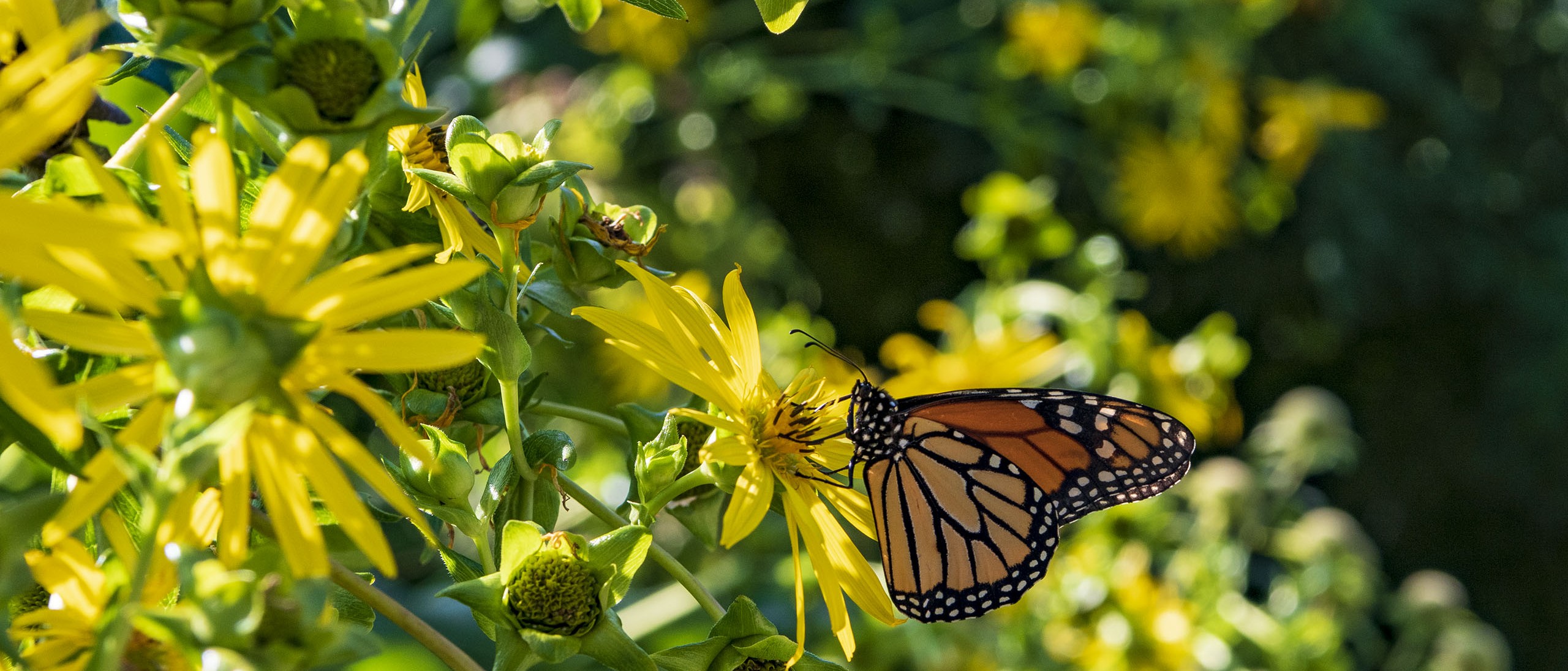
Monarch Waystations for Any Size Garden
Presenter: Sarah Dickert, Smithsonian Gardens
Bad news: Everyone loves monarch butterflies, but their habitats are declining so they are at risk. Good news: You can help by creating a monarch “pit stop” in your garden! Helping monarchs is easier than you think, whether you have a large backyard garden or just a sunny balcony. Find out how to create a Monarch Waystation from Smithsonian Gardens’ Horticulturist Sarah Dickert.
Additional Resources
- Monarch Watch: info on waystation program, tagging, plant lists, milkweed sources, & educational resources
- Monarch Joint Venture: collection of organizations & agencies working to save monarchs, use page for “Individual” for plant list and add’tl resources
- Xerces Society: articles with info & stats on monarch decline, milkweed sources, & plant lists
- Pollinator Partnership: Ecoregional planting guides
Plant List
Perennials
- Agastache (Anise Hyssop): generally purple flowers; new varieties in reds, oranges, and yellows
- Verbena bonariensis (Verbena): not native to North America, not hardy north of Zone 7. The native verbena is Verbena hastata.
- Lobelia cardinalis (Cardinalflower): generally red flowers, newer varieties with dark foliage or pink flowers, tolerates wet soil, gets 3-4ft. tall
- Lobelia siphilitica (Blue Cardinalflower): 2-3ft. tall, blue flowers, long bloom time, also good for wet soil
- Penstemon (Beardtongue): several varieties available, earlier bloomer
- Eutrochium [syn. Eupatorium] (Joe Pye Weed): try shorter variety ‘Little Joe’ (3-4’ tall)
- Pycnanthemum muticum (Blunt Mountain Mint): pollinator all-star! Literally covered with all kinds of pollinators, in the mint family so it does spread but can be pulled to maintain clump, grow in a pot to control spread
- Vernonia (Iron Weed): purple fall bloomer; noveboracensis (New York Iron Weed) gets tall (4-6ft.); lettermannii ‘Iron Butterfly’ gets 2-3 ft. tall
- Echinacea (Coneflower): popular, versatile perennial; lots of color and height combinations available; also consider sp. pallida – recommended variety ‘Hula Dancer’
- Liatris (Blazing Star): ‘Kobold’ popular garden variety, bold purple flower spikes, 3-4 ft. tall
- Monarda (Bee Balm): many cultivars available, wide range of heights and colors (ranging from purple to red to pink); sp. fistulosa is great for pollinators; all monardas are in the mint family so they are definite spreaders, also prone to powdery mildew, some newer cultivars are less susceptible (including fistulosa)
- Symphyotrichum (Aster): great fall blooms for migrating monarchs, several species and cultivars to choose from
- Solidago (Goldenrod): gorgeous yellow flowers to pair with asters and sedums; again, several species cultivars to choose from; NOT the cause of fall allergies (ragweed is to blame!)
Annuals
- Lantana: butterfly magnet! blooms all summer long
- Zinnias: choose single flower varieties (daisy-like) instead of double flowering
- Pentas (Egyptian Star Flower): large round flower clusters; available in reds, pinks, whites, and light purples
- Tithonia (Mexican Sunflower): try ‘Torch,’ a slightly shorter variety- about 4’ tall vs. 6’ for straight species
- Helianthus (Sunflower): easy to grow from seed
- Marigolds: classic annual, keep them dead-headed so they rebloom all summer
- Salvia: recommend ‘Amistad’, ‘Love & Wishes’, ‘Black and Bloom’- they get huge! Also attracts hummingbirds
- Gomphrena (Globe Flower): ‘Fireworks’ gets huge with tons of pink ball flowers on the end of long stems; shorter varieties available for containers or bed borders
- Herbs: great for pollinators and monarchs with the bonus of herbs to use
